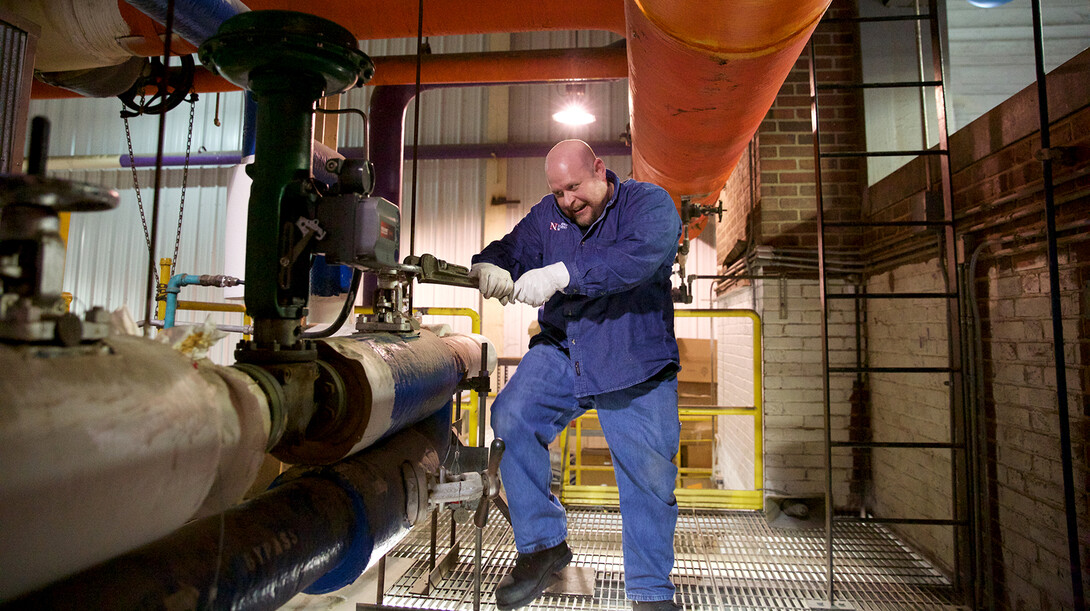
Utility Services is putting the heart of Husker power on display.
Working to increase the visibility of and knowledge about how the University of Nebraska–Lincoln distributes its electricity and provides heating/cooling to campus buildings and some state government facilities, Utility Services is offering public tours of the university’s utility plants. Primarily offered to engineering and vocational/technical students in the past, the tours opened to the public in August, with details incorporated into a redesign of the Utility Services website.
“We want bring attention to what we’re all about here at Utility Services,” said Tim Barker, operations manager for UNL’s City Campus utility plant. “These utility plants are a big budget item for the university. We want people to be able to see the plants and realize that we are being good stewards with that money, working to keep costs down while also investing in green initiatives.”
UNL operates four utility plants with one each on City and Nebraska Innovation campuses, and two at East Campus. The plants run 24 hours per day with four shifts of employees managing those operations.
“We’re a 24/7/365 operation,” Barker said. “There are no holidays here.”
The Innovation Campus utility plant went online in 2014 and features an innovative centralized renewable energy system that warms and cools buildings at the research park by exchanging heat from water discharged from the City of Lincoln’s nearby wastewater treatment facility.
Originally coal-fired heating facilities, the City Campus and main East Campus utility plants are among the oldest UNL buildings, having been constructed in 1929 and 1915, respectively. Both have been updated with new equipment and modifications to meet industry and environmental standards.
The fourth utility plant, located on East Campus, is a thermal energy storage tank. The 2.8 million gallon tank allows UNL to store water that is chilled at night during off-peak electricity rate hours. The water is then distributed during the hottest hours of the day to air condition East Campus buildings.
Tours of the facilities examine all parts of the utility plant operations. Groups learn how energy is converted to other useable services and how technology has changed the production and distribution of those services.
The tours flow between massive floor-vibrating boilers and chillers, allowing visitors to experience the sights, sounds and feel of a fully-operational, modern utility plant.
“The hope is people come away with a better understanding of what we are doing here,” Barker said. “We want them to know that Utility Services is a big asset to the university and that we are doing things as efficiently as possible.”
Barker, who organizes the tours for Utility Services, said information presented is tailored to meet the technical level of each group.
“The information we present is based on the audience,” Barker said. “We’ve given tours at just about every level, from Girl Scouts to engineering students.”
Barker also incorporates a bit of the history behind UNL’s utility plants into each tour. For example, the tour of the City Campus plant starts at a desk that has been a part of the facility since the 1920s.
“It’s an old operator’s desk that we restored and continue to use today,” Barker said. “It is a great way to tie in the history of this building with its modern services.”
For more information on tours of UNL’s utility plants, click here or contact Barker at tim.barker@unl.edu.











